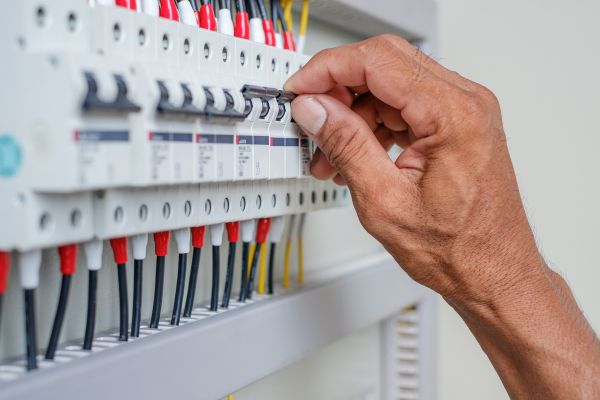A sudden loss of power in part of your home can be frustrating, especially if it interrupts your daily routine. In many cases, this issue is caused by a tripped circuit breaker. Understanding the process of resetting a tripped circuit breaker not only restores your electricity but also helps you recognize potential electrical problems before they escalate. This guide will walk you through everything you need to know about identifying, understanding, and safely resetting a tripped circuit breaker.
What Does It Mean When a Circuit Breaker Trips?
A circuit breaker is a crucial safety device in your home’s electrical system. It is designed to shut off electrical flow when it detects an overload or a short circuit. This mechanism prevents overheating and reduces the risk of fires and other electrical hazards. When too many appliances run simultaneously on the same circuit or when a fault occurs, the breaker trips, cutting off power to prevent damage.
If you suddenly lose power in a specific area of your house, it’s likely that the breaker protecting that circuit has tripped. Recognizing this as a safety feature is essential, as it indicates the system is doing its job to protect your home.
How to Identify a Tripped Circuit Breaker
Before attempting to reset anything, you need to confirm that a tripped breaker is indeed the issue. Head to your home’s electrical panel, often located in a garage, basement, or utility room. Open the panel door and inspect the breakers. A tripped breaker typically sits in a middle position between “on” and “off” or may have an indicator showing red or orange.
Take a moment to check whether other appliances or devices plugged into the affected circuit were running simultaneously. This could help you pinpoint what caused the overload. For example, high-wattage appliances such as microwaves, hairdryers, or space heaters often lead to tripped breakers if used together on the same line.
Steps for Resetting a Tripped Circuit Breaker
Resetting a tripped circuit breaker is a straightforward process, but it requires attention to safety. Begin by ensuring your hands are dry and you are standing on a dry surface to avoid any risk of electrical shock. Next, locate the tripped breaker and push it fully to the “off” position. This step is crucial because a breaker will not reset properly unless it is turned off completely.
Once you have ensured it is off, firmly push the breaker back to the “on” position. You may hear a click as it engages. At this point, power should return to the affected area of your home. Test a few outlets or light switches in that zone to confirm that electricity has been restored.
When Resetting Isn’t Enough
In most cases, resetting a tripped circuit breaker resolves the issue quickly. However, if the breaker trips again immediately after you reset it, this is a warning sign of a more serious electrical problem. Continuous tripping can be caused by faulty wiring, a short circuit, or a malfunctioning appliance.
Unplug all devices on the affected circuit and try resetting the breaker once more. If the breaker still refuses to stay on, it’s time to contact a licensed electrician. Attempting repeated resets without addressing the underlying issue can be dangerous and may lead to further damage.
Common Causes of Tripped Circuit Breakers
Understanding why your circuit breaker tripped in the first place can help you prevent future incidents. Overloaded circuits are the most frequent culprit. Plugging too many devices into the same outlet or using extension cords excessively increases the demand on the circuit.
Short circuits, caused by a fault in the wiring or an appliance, are another common reason. They occur when a hot wire touches a neutral or ground wire, leading to an abrupt surge of electricity. Ground fault surges can also trip breakers, often linked to moisture in outlets, especially in kitchens or bathrooms.
By identifying and managing these situations, you can reduce the likelihood of repeated trips and ensure your electrical system functions safely and efficiently.
Safety Precautions When Dealing with Circuit Breakers
While resetting a breaker is generally safe for homeowners, it’s vital to remain cautious. Avoid forcing a breaker that resists resetting, as this could indicate a serious problem. Never attempt to tamper with wiring or replace a breaker yourself unless you have proper training and certifications. Electricity is hazardous, and professional expertise is necessary to handle complex electrical repairs safely.
Regular maintenance and inspections of your home’s electrical system can help catch issues before they result in tripped breakers. Consider scheduling a professional assessment if your breakers trip frequently or if you notice flickering lights, burning smells, or unusual buzzing sounds near the panel.
Why Knowing How to Reset a Circuit Breaker Matters
Being able to reset a tripped circuit breaker is an essential skill for any homeowner. It saves time and prevents minor inconveniences from escalating into major issues. More importantly, it allows you to respond calmly and effectively when power outages occur due to tripped circuits.
However, this knowledge should always be paired with an understanding of your limits. When in doubt, professional help is the safest route. Electricians are trained to diagnose and repair underlying issues, ensuring your home remains safe and fully functional.
Final Thoughts on Resetting a Tripped Circuit Breaker
Resetting a tripped circuit breaker is a simple yet important task that every homeowner should know how to perform. It restores power quickly and helps you stay in control during unexpected outages. Remember, while the process itself is easy, frequent breaker trips are a sign of potential electrical hazards that should never be ignored. Prioritize safety, and when needed, seek the expertise of a licensed electrician to keep your home’s electrical system running smoothly.
By understanding the steps involved and recognizing when professional assistance is necessary, you can handle electrical interruptions with confidence and peace of mind.
